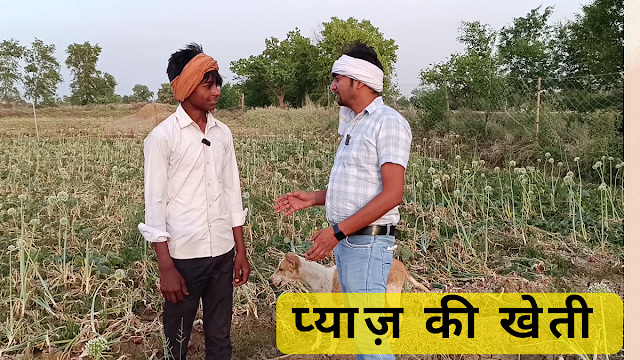Onions are one of the most vital vegetables in Indian cuisine, forming the base of countless dishes. Cultivating onions successfully requires a nuanced understanding of the crop's needs, soil conditions, planting techniques, and harvesting methods. Let's delve into the detailed process of onion agriculture in India.
Soil Preparation
The first step in onion cultivation is preparing the soil. Onions thrive in well-drained, sandy loam soil with good organic matter content. The soil should ideally have a pH level ranging from 5.8 to 6.5. Before planting, plough the land thoroughly to a fine tilth, incorporating farmyard manure or compost to enrich the soil.
Seed Selection and Sowing
Onions can be grown from seeds or sets (small bulbs). In India, onion seeds are commonly used. Select high-quality seeds from reliable sources. Sow the seeds in nurseries or directly into the field, depending on the season and region. For direct sowing, sow seeds at a depth of 1 to 2 cm, maintaining row-to-row spacing of 10 to 15 cm.
Seedling Management
Onion seeds germinate in about 4 to 5 days under optimal conditions. Thin the seedlings to ensure proper spacing and healthy growth. Keep the seedlings well-watered and protected from pests and diseases during this stage. Transplant the seedlings when they are 6 to 8 weeks old and have 4 to 5 leaves.
Field Management
Onions require regular watering, especially during bulb formation. Irrigate the field regularly but avoid waterlogging, as onions are susceptible to rot in waterlogged conditions. Control weeds through regular weeding and mulching to conserve moisture and suppress weed growth.
Fertilization
Apply fertilizers based on soil test results. Generally, nitrogen (N) is applied in split doses: half at planting and the remaining half during bulb formation. Phosphorus (P) and Potassium (K) should also be applied according to soil requirements. Organic sources like farmyard manure or compost can supplement chemical fertilizers.
Pest and Disease Management
Onions are vulnerable to pests like thrips, aphids, and onion maggots, as well as diseases such as damping-off and purple blotch. Use appropriate pesticides and fungicides as per recommendations to control pests and diseases. Organic farming methods can also be employed for sustainable pest management.
Harvesting
Onions are ready for harvest when the tops turn yellow and start to fall over. Carefully loosen the soil around the bulbs and lift them from the ground. Avoid bruising or damaging the bulbs during harvest. Allow the bulbs to dry in the field for a few days, then move them to a well-ventilated area for curing.
Curing and Storage
Cure the onions by drying them in the sun for a few days to toughen the outer skins. After curing, trim the roots and tops to about one inch. Store onions in a cool, dry, and well-ventilated area. Properly cured and stored onions can last several months without spoiling.
Market and Sale
Market your onions at local markets, to wholesalers, or through cooperatives. Ensure proper grading and packaging to attract buyers. Keep an eye on market trends to optimize your sales strategy.
Conclusion
Onion agriculture in India requires dedication, attention to detail, and a comprehensive understanding of the crop's lifecycle. By following these guidelines for soil preparation, sowing, field management, and post-harvest care, farmers can increase onion yield and quality, contributing to the vibrant agricultural landscape of the country. Onion cultivation not only sustains livelihoods but also plays a crucial role in meeting the culinary demands of millions across India.


